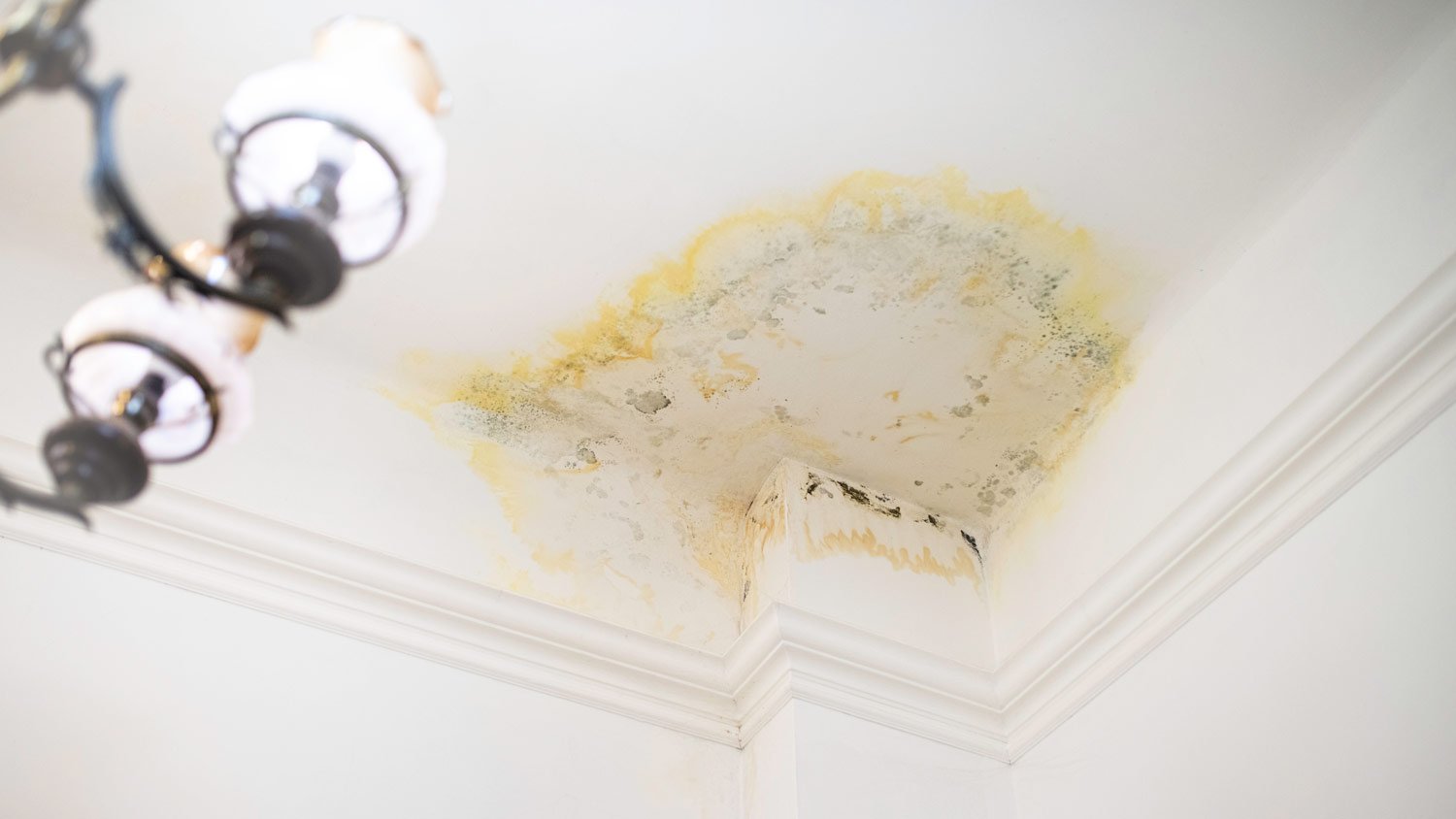Everything You Need to Know About the Hail Damage Insurance Claim Process
Hail damage can be frustrating, but knowing the steps to file a claim with confidence can help


Hail can damage your home, so it may make sense to file an insurance claim.
Take photos of the damage, but don’t start repairs yourself.
Be sure the contractor you hire is licensed.
Your insurance may issue a payout in one of a few ways.
When a hailstorm rolls in, it can do more than ruin a fun day in the sun—in some situations, these storms can be severe enough to leave lasting damage. Between filing a claim with your insurance company and completing the needed repairs, when hail damages your home, you may not know where to start.
Does Homeowners Insurance Cover Hail Damage?

Luckily, standard homeowners insurance covers hail damage in most states. The finer details may vary based on where you live, your insurer, and your insurance policies, but we’ll explain all about filing a homeowners insurance claim after roof damage caused by hail.
Filing a Hail Damage Insurance Claim
The hail damage claim process can seem daunting, but it’s usually worth your time and energy. Most insurance companies have apps that connect to your phone, making the process a bit easier. Visit that app or the company’s website if you can’t access the app, and go to their claim filing page. You may also want to call your representative directly.
You’ll be asked to fill in some information, such as when the damage occurred and the extent of the damage. After your claim is submitted, your insurer will process it. Processing time differs based on the company you’re working with.
After the claim has been processed, you’ll be assigned an adjuster, who will visit your home and inspect the roof to ensure the hail is what caused the damage. If you can, reach out to a trusted local roofing specialist to come to your home at the same time as the adjuster to ensure your assessment is carried out fairly.
After the adjuster has made their assessments, they’ll return to the insurance company and present their information, at which time your insurer will approve or deny the claim. You can read more in-depth info on the hail damage insurance claim process in the steps below.
1. Document the Damage
When it’s safe, take extensive photographs of the damage to your home from the ground. If possible, measure or estimate the size of the hail (though you should never go up on the roof).
You should also review your insurance policy so you know what to expect and what questions to ask. Do not start repairs. If necessary, cover the damage with a tarp to protect your home while the claim is processed.
2. File a Claim
When you file a claim, you are requesting that your insurance company pay for repairs to your home based on the coverage in your policy. Contact your insurance provider promptly, ask to file a claim, and an agent will discuss what’s covered under your current policy as well as walk you through the next steps. This step usually involves scheduling a meeting with an insurance adjuster. You may be asked to submit photos or videos.
3. Collect Repair Estimates
In addition to contacting your insurance provider, you should promptly contact several local home repair contractors to collect independent estimates for the cost to repair your home.
Have the contractors check your roof, windows, screens, fences, and air conditioning units. You’ll want to have at least one quote before your insurance meeting, but we recommend getting three quotes from three different contractors.
Timeliness is key, especially if your entire local area is affected, as contractors may get swamped by others experiencing similar damage.
Do not sign any contracts at this stage. If possible, arrange to have a trusted contractor attend your scheduled insurance adjuster meeting. Once the contractor has assessed your home, they can voice concerns to the adjuster and help ensure that you get a fair assessment of the total damage and cost for repairs.
4. Meet With Your Insurance Adjuster
Your insurer will send an insurance adjuster to determine the cause of the damage and assess the total cost. You will share with them your notes, photographs, and any estimates you’ve gathered from local contractors. The adjuster will create a report that includes all of these details and submit it to your insurance company, which will then process the claim.
You don’t have to accept your insurer’s initial offer if it doesn’t account for the entire scope of work estimated by your contractor. In such a case, contact your adjuster and attempt to reach an agreement. Have your contractor speak with the adjuster directly, if necessary.
If you don’t reach an agreement, you also have the right to hire an independent adjuster and submit a new report to your insurance company asking for a higher payout. If all else fails, you can hire an attorney or file a dispute with your state’s insurance commissioner. These measures are more drastic and require you to pay a fee, so they should be reserved for larger claims.
5. Receive a Payout
Once your insurance provider has approved your claim and you’ve reached a settlement for the cost of repairs, you will receive a payout for the cost of repairs (minus your deductible). The claims payment process can vary greatly, so refer to your policy or speak to your insurance agent to know what to expect. Here are some different potential scenarios:
You may receive an initial advance payment that doesn’t cover the total cost. The rest will be paid out once repairs are complete.
If you owe money on your home’s mortgage, you may have to work with your mortgage company to get the money released.
In some cases, you may be asked to sign a form allowing your insurance company to pay your contractor directly. Carefully read the terms to ensure you don’t sign over the entire claim and allow your insurer to make the final payment until work is complete.
If the damage is extensive, you may get multiple checks for damage to your home and personal belongings, plus living expenses if you need to leave your home.
6. Contact a Lawyer (Optional)
Legal representation isn’t always necessary, but if you are unhappy with how your insurance company handles the claim, or have a difficult adjuster, you may consider hiring a lawyer. They should be able to tell you in the initial consultation if there’s anything you can do that makes it worth hiring them for representation.
7. Hire a Contractor
Your insurer may refer you to a contractor, but you have the final say on who completes the work. Feel free to hire someone you trust to do the work to your satisfaction.
When choosing a contractor to repair your home, review their background and ensure that they are fully licensed. Working with an unlicensed contractor may prevent you from receiving your claim payment.
Is the Hail Damage Claim Process Worth the Hassle?
"Your insurance provider will be a great resource of information when filing any type of claim,” says Asya Biddle, Angi Expert Review Board member and manager of The Dust Busters janitorial company in Williamsport, PA. “Within most insurance offices, a service assistant will be able to provide guidance when it comes to deciding if it’s worth it to file a claim or pay out of pocket to repair the damage. They’ll also be able to assist you in the claim filing process if you choose to do so,” says Biddle.
When deciding whether or not to file a claim, be sure that the insurance payout you are offered exceeds your deductible by enough to make financial sense. It can sometimes be wiser to simply pay for repairs out of pocket.
Filing a claim could also raise your homeowners insurance premium depending on your policy. In most cases, this won’t happen. Bad weather is not caused by negligence, and hail damage claims are considered “no-fault.” However, insurance companies may raise rates if you file multiple claims in a set period. This practice is prohibited in some states, so be aware of your local laws.
Questions to Ask the Repair Company
Before hiring a repair company to handle the hail damage, consider asking them some or all of the following questions to ensure they are a good fit:
Do you specialize in storm repair? Not all repair companies understand hail damage. Only work with contractors who are familiar with the type of damage your home incurred and can properly repair it.
Do you do the work yourself? Often, the professionals who knock on your door or answer your phone call are not the contractors who do the work. If they are ‘storm chasers,’ they may not have a local company, and you may never hear from them again after they complete the work. Stick to only local companies to ensure you have support after they complete the work.
Does the damage require immediate repairs? Most hail damage isn’t an emergency, but you also don’t want to let it sit for too long for the damage to worsen. A reputable contractor should be able to tell you how bad the damage is or how urgently you need repairs.
Does my roof require repair or replacement? If your roof was nearing the end of its life or the damage was extensive, replacing it may make more financial sense. Talk to your contractor about your options and the life span each will provide your roof.
Can you supply professional references? Reputable contractors should offer references that you can call or email and ask questions. If a contractor hesitates or refuses to give you a reference, consider looking for a different contractor.
Frequently Asked Questions
Most insurance companies require a hail damage insurance claim to be filed within one year of the date the hailstorm happened. However, each insurance carrier and policy is different, so check with your specific carrier before you decide to delay filing a claim. In general, the quicker you file a hail damage claim, the better the outcome will be.
You’ll be in the best position to negotiate a hail damage claim if you thoroughly document the damage the hail caused to your property, file a claim immediately, and seek legal advice. It’s a good idea to keep images of your non-damaged property; that way, you have something to compare the damage to. As with many things, talking with a legal representative is the best way to make sure your interests are protected.





- How to Make an Insurance Claim for Roof Damage
- 10 Water Damage Insurance Claim Tips
- How to Make a Water Leak Insurance Claim
- 12 Valuable Tips So You Can Start Itemizing Damages for Your Homeowners Insurance Claim
- Does Homeowners Insurance Cover Water Damage?
- What Homeowners Need to Know About Contractors and Insurance Claims
- Steps to Get Your Insurance to Pay for a Roof Replacement
- Should I Show My Contractor My Insurance Estimate?
- Does Home Insurance Cover Roof Leaks? Here’s What You Should Know
- 9 Strategic Ways to Save on Homeowners Insurance











